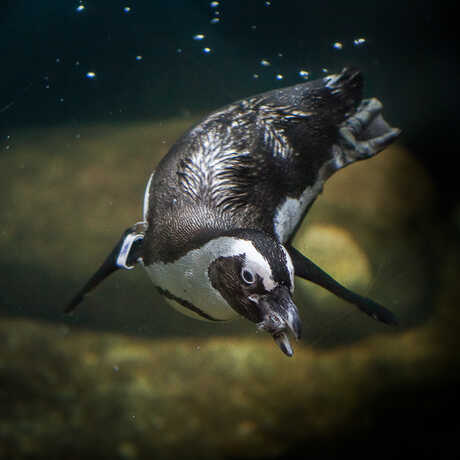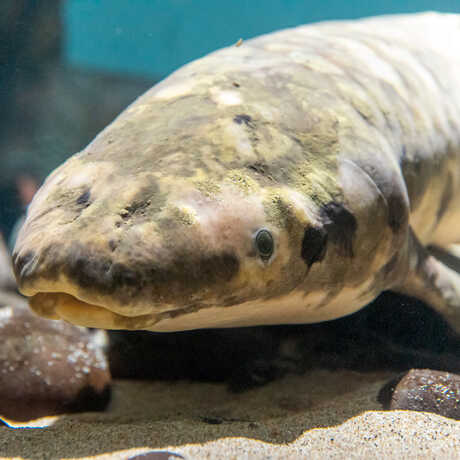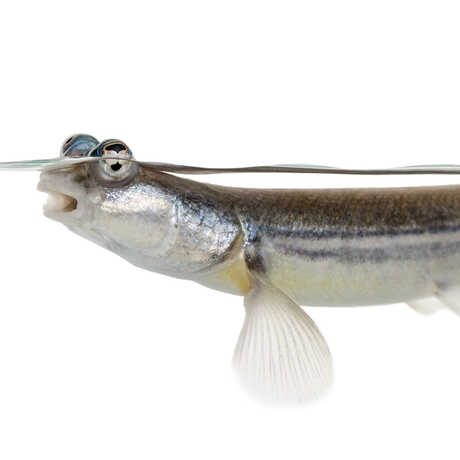Critically endangered sunflower sea stars (Pycnopodia helianthoides) are now on exhibit in Water Planet! We're excited to watch them grow up—and we continue to work with partners across California to bring Pycnopodia back from the brink.
Water Planet
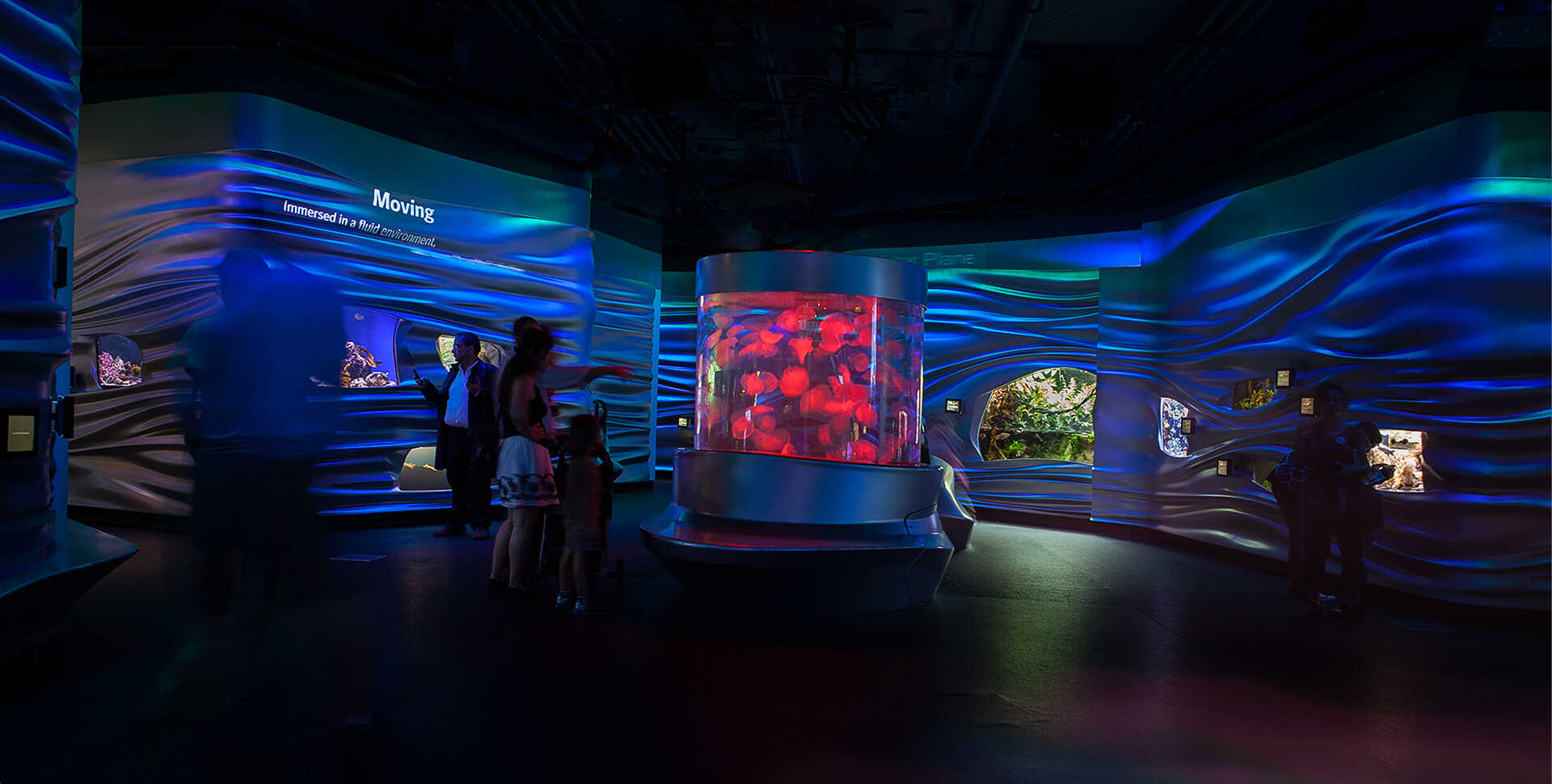
Water Planet features an ever-changing cast of fish, reptiles, amphibians, insects, and more—all organized by adaptations to water. Seven clusters of tanks highlight animals that have evolved fascinating methods of feeding, movement, reproduction, defense, sensing their surroundings, surviving in deserts, and living both in and out of water.
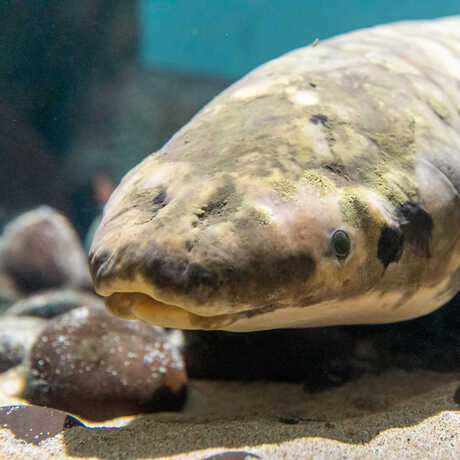
Dining in
Methuselah, the Academy's beloved Australian lungfish (Neoceratodus forsteri), is the oldest living fish in human care on Earth. Special receptors around her mouth help her find hidden prey—but she prefers to be hand-fed figs.
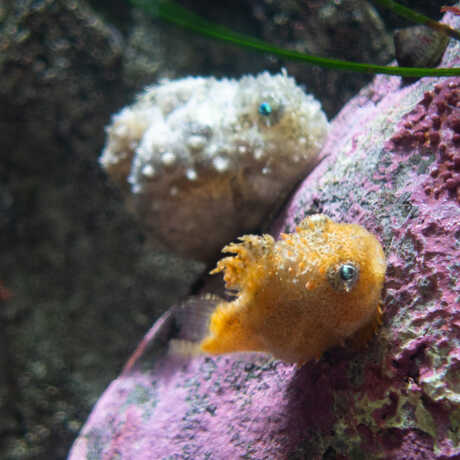
Getting around
In the movement cluster, Pacific spiny lumpsuckers (Eumictrotremus orbis) use a suction-cup-like structure to stick to underwater surfaces.
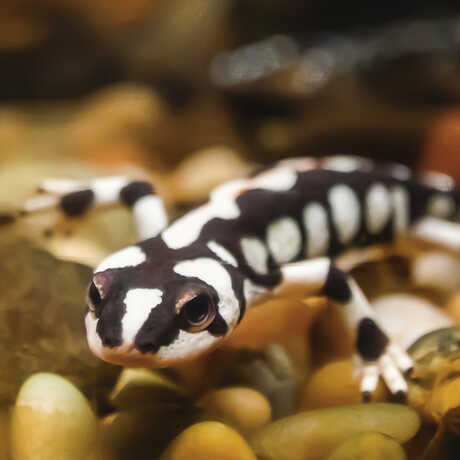
Going to extremes
The Luristan newt (Neurergus kaiseri) is a water conservation expert, remaining as inactive as possible during Iran's dry season. The brief rainy season prompts these amphibians to rush to the nearest stream to mate.
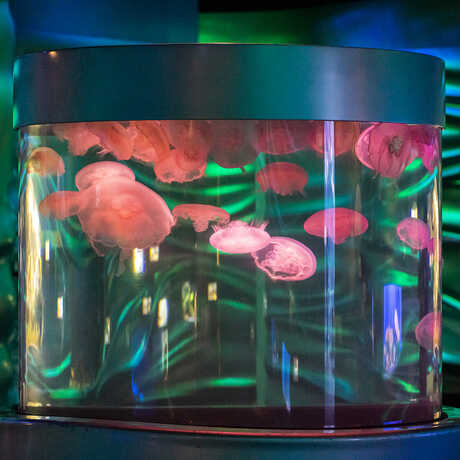
Salty seas
Columns of ethereally drifting moon jellies (Aurelia aurita) reveal surprising ideas about how salinity affects movement.
Be mesmerized by colorful coral reef fish, soaring stingrays, and adorable African penguins—streaming live to your device, 24/7.
